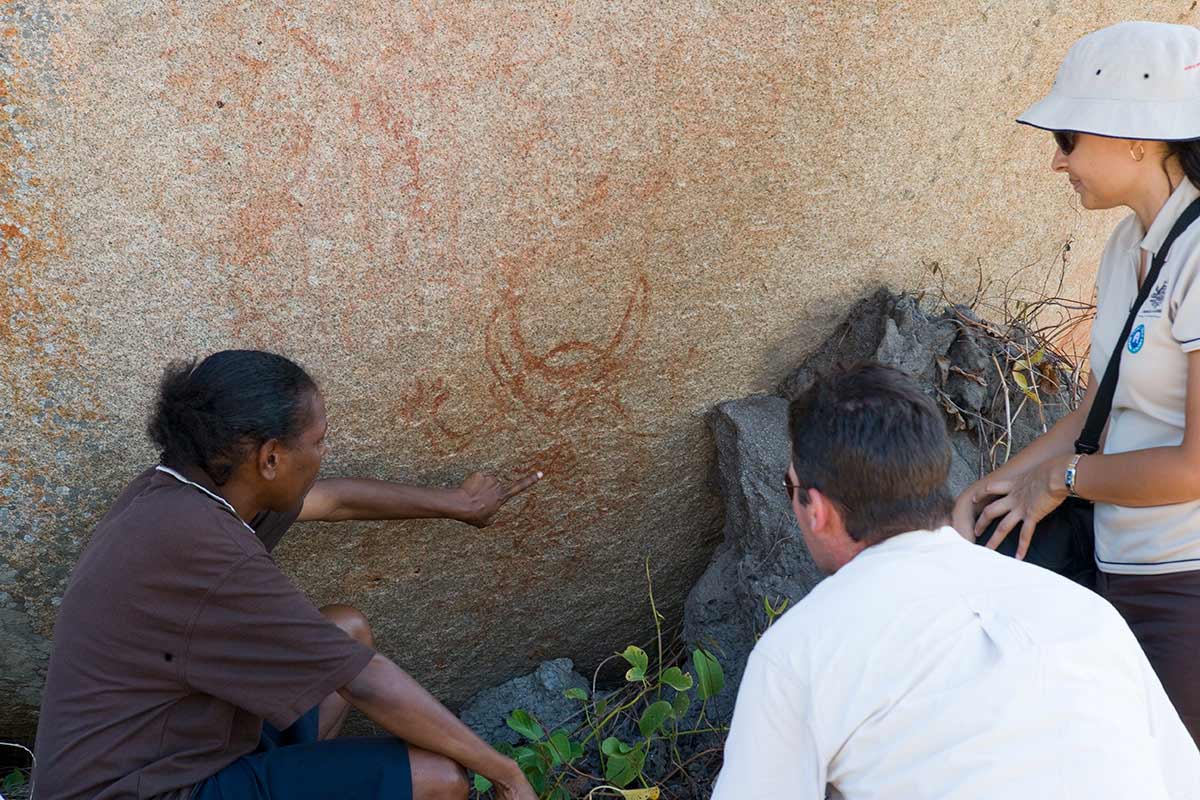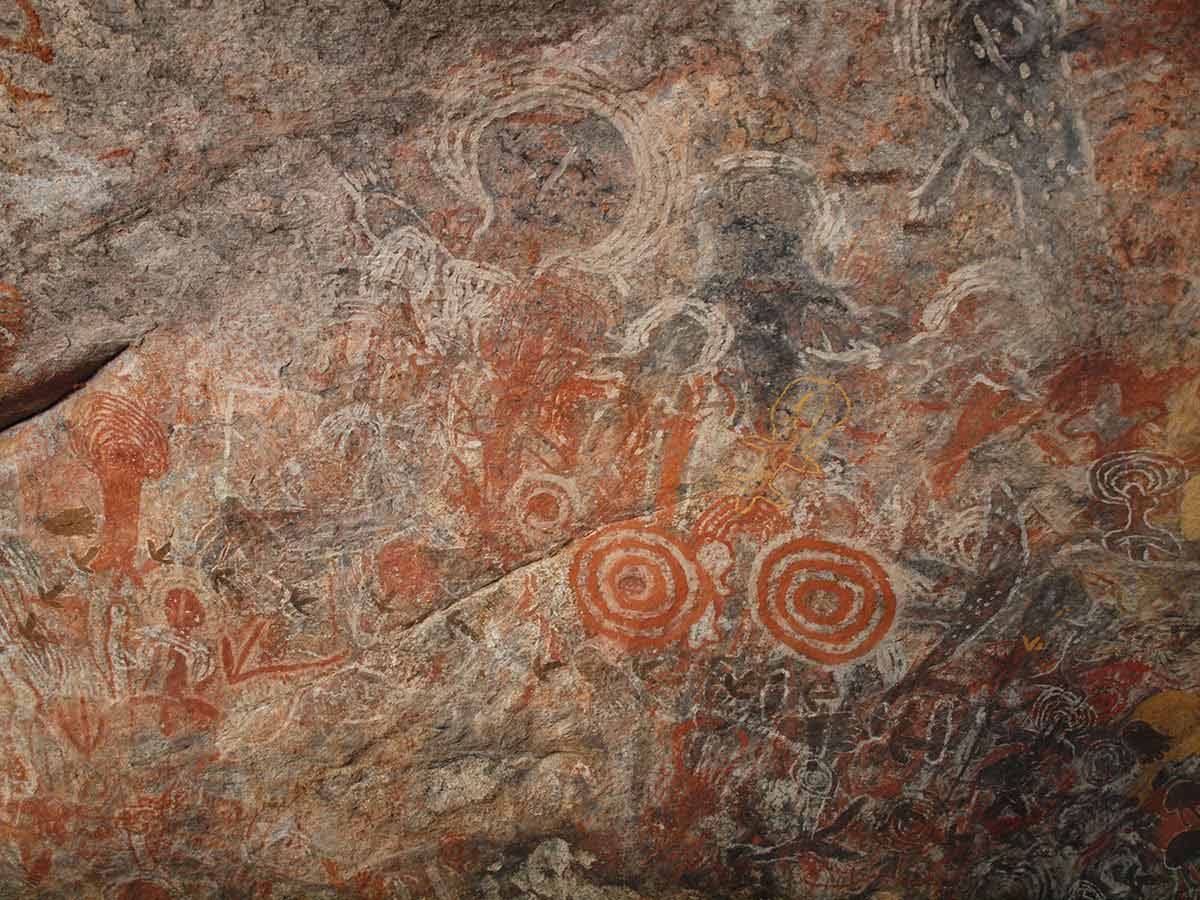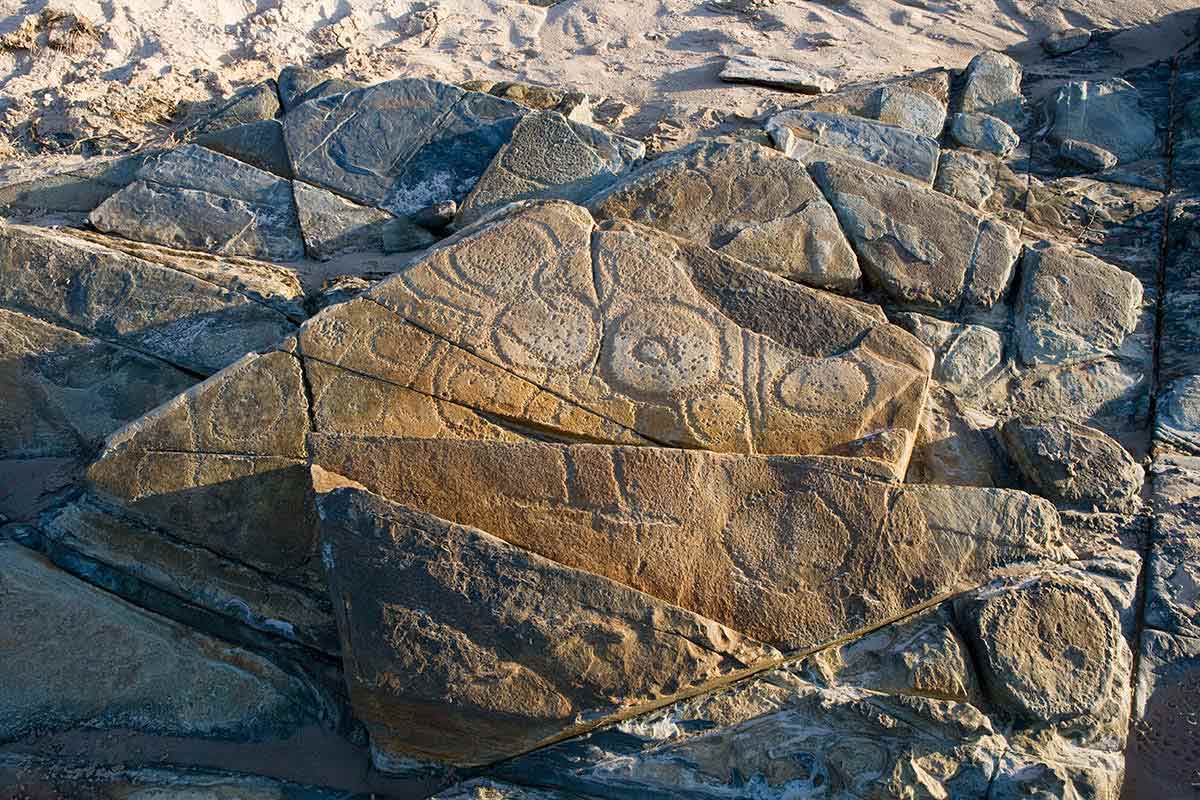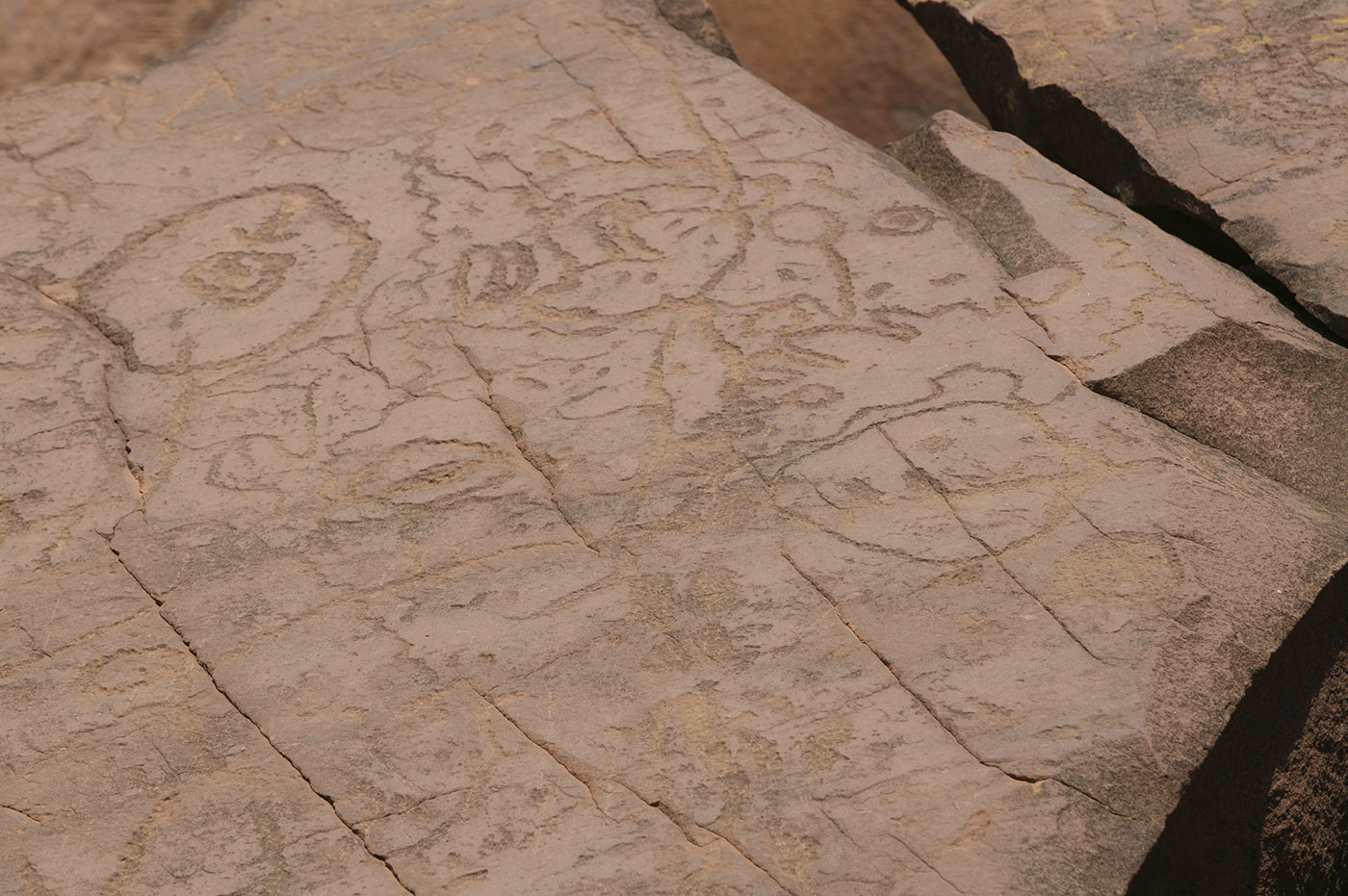Rock art is a vital part of First Nations cultures in Australia, and offers a window onto how humans lived and thought on this continent from the earliest period of human habitation.
Bill Neidjie, Kakadu man:
Our story is in the land. It is written in those sacred places.
Rock art is the oldest surviving human art form. Across Australia rock art is an integral part of First Nations life and customs, dating back to the earliest times of human settlement on the continent. Petroglyphs (rock engravings) and pictographs (drawings) are a key component of rock art.
Researchers estimate that there are more than 100,000 significant rock art sites around Australia. More than 5,000 are located in the Northern Territory’s Kakadu National Park alone.
The first humans arrived in Australia between 65,000 and 80,000 years ago. Australian rock art has been dated to around 30,000 years ago, although there are possibly much older sites on the continent.
‘We don’t have the [dated] art but we’ve found the tools that were used to make the art … close to 50,000 years ago,’ says Dr Bruno David, an anthropological archaeologist from Monash University.
All cultures use imagery to tell stories, so it is likely that, from the time of their first arrival in Australia, First Nations peoples were using artworks in sacred and public sites to give form to their narratives. For First Nations peoples in Australia, rock art sites are records of their ongoing history since time immemorial.
Rock art forms
Rock art consists of paintings, drawings, engravings, stencils, bas-relief carvings and figures made of beeswax in rock shelters and caves. It can take two main forms: engravings (petroglyphs) and paintings or drawings (pictographs).
Petroglyphs are created by removing rock through pecking, hammering or abrading in order to leave a negative impression.
Pictographs are made by applying pigments to the rock. Drawings use dry colours, such as charcoal, clay, chalk and ochre (which can be anything from pale yellow to dark reddish brown). Paintings use wet pigments made from minerals, which are applied by finger or with brushes made from chewed sticks or hair. Sometimes stencils are created by blowing the colour from the mouth over an outline.
Broadly speaking, rock art in Australia employs two main design types. The first uses engraved geometric forms, such as circles, concentric circles, arcs, dots or animal tracks.
The second creates figurative forms, such as painted or engraved silhouettes of humans or animals. These figures can be either simple outlines or more complex constructions. The X-ray pigment art of Kakadu, for example, shows the internal organs of humans and animals.
Within these two main designs, however, infinite variations are possible, depending on the preferences of the individual artist or cultural groups.
Location
Petroglyphs were created on almost any stone surface, and examples of engraved art can be found across the continent. But examples of pictographs usually survive only in more sheltered areas, such as overhangs or caves. Owing to their connection to First Nations beliefs, many of these locations are considered sacred sites.

Rock art protection
Rock art is an invaluable spiritual, historic and artistic resource, but it raises various issues, primarily concerning how it can best be protected.
Rock art sites face many challenges. In urban areas they are vulnerable to development and vandalism, while the preservation of sites in remote, often mineral rich, locations can be threatened by mining, industrial and pastoral activities, as well as, natural disasters
First Nations peoples’ knowledge of rock art is still vital and alive in Australia today. Stories about these artworks have been passed down, in some cases through thousands of generations, and in others directly from the artists themselves.
In Australia in 2025, seven heritage places are on the National Heritage List, in recognition of their outstanding cultural significance to the nation: Dampier Archipelago (including Burrup Peninsula), Grampians National Park, Kakadu National Park, Koonalda Cave, Uluru-Kata Tjuta National Park, the Tasmanian Wilderness and the West Kimberley.
All these sites have been given the highest protection under the Environment Protection and Biodiversity Conservation Act 1999.
Several of these locations have also been inscribed on UNESCO’s World Heritage List, including the Murujuga Cultural Landscape that encompasses the Burrup Peninsula, the Dampier Archipelago’s islands and nearby marine areas.
With the proper care and recognition of their cultural value, these sites will continue to be appreciated by generations of Australians to come.
In our collection
References
Australia's National Heritage List
Compleat archaeologist: Mike Smith, desert archaeology and museums
Environment Protection and Biodiversity Conservation Act 1999
Songlines: Tracking the Seven Sisters
Christophe Chippindale and Paul SC Taçon (eds), The Archaeology of Rock-Art, Cambridge University Press, Cambridge, UK, 1998.
Bruno David and Ian J McNiven (eds), The Oxford Handbook of the Archaeology and Anthropology of Rock Art, Oxford University Press, New York, 2018.
Josephine Flood, Rock Art of the Dreamtime: Images of Ancient Australia, HarperCollins, Pymble, NSW, 1997.
Jo McDonald and Peter Veth (eds), A Companion to Rock Art, Wiley-Blackwell, Oxford, UK, 2012.


